Plate-augmented fixation of comminuted Letenneur type II Hoffa fractures provides favorable stability compared to isolated posteroanterior screw fixation - a biomechanical study
- PMID: 40387941
- PMCID: PMC12089159
- DOI: 10.1007/s00402-025-05920-x
Plate-augmented fixation of comminuted Letenneur type II Hoffa fractures provides favorable stability compared to isolated posteroanterior screw fixation - a biomechanical study
Abstract
Introduction: Current literature lacks recommendations regarding proper fixation of comminuted coronal plane fractures of the posterior femoral condyles (Hoffa fractures). Therefore, the aim of this study was to compare the biomechanical characteristics of different plate-augmented constructs to isolated posteroanterior screw fixation in comminuted lateral Hoffa fractures.
Materials and methods: Comminuted Letenneur type IIb lateral Hoffa fractures were simulated in 24 human cadaveric distal femora. The fractures were fixed with either isolated crossed posteroanterior screws or additionally with either a posterior plate, a lateral locking plate, or combined posterior and lateral locking plates. All specimens were biomechanically tested under progressively increasing cyclic loading until failure, while capturing the interfragmentary movements of the Hoffa and intercalary fragments via motion tracking.
Results: Plate-augmented posteroanterior screw fixation of the Hoffa fragment exhibited higher cycles to failure, higher failure loads (p < 0.05) and less axial displacements (p < 0.05) compared to isolated posteroanterior screw fixation. Both additional lateral locking and double plate fixations of the intercalary fragment provided higher cycles to failure, higher failure loads (p < 0.05) and less axial displacement (p < 0.05) than isolated posteroanterior screw fixation, whereas additional posterior plate fixation did not significantly increase cycles to failure, failure loads and axial displacement (n.s.). Fracture gap twisting and opening did not differ significantly between the four constructs for the Hoffa fragment, while plate-augmented constructs provided less fracture opening of the intercalary fragment compared to isolated posteroanterior screw fixation (p < 0.01).
Conclusions: Plate-augmented posteroanterior screw fixation of comminuted Letenneur type IIb Hoffa fractures provided greater biomechanical stability than isolated posteroanterior screw fixation. While additional lateral or double plate fixation improves the stability of both the intercalary and Hoffa fragment, posterior plating stabilized only the Hoffa fragment.
Keywords: Biomechanical testing; Hoffa fracture; Letenneur classification; Motion tracking; Plate-augmented fixation; Posteroanterior screw fixation.
© 2025. The Author(s).
Conflict of interest statement
Declarations. Ethics approval: The donors (Science Care, Phoenix, Arizona, USA) bequeathed in informed consent their corpse for use in medical science during their lifetime. Competing interests: The authors declare no competing interests.
Figures
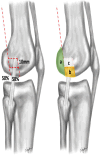
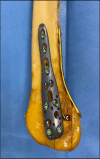
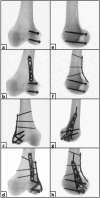
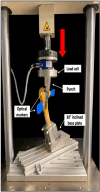
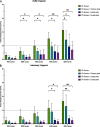
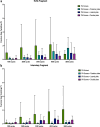
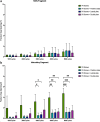
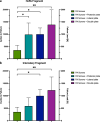
Similar articles
-
Fragment size of lateral Hoffa fractures determines screw fixation trajectory: a human cadaveric cohort study.Acta Orthop. 2024 Jun 14;95:290-297. doi: 10.2340/17453674.2024.40841. Acta Orthop. 2024. PMID: 38874493 Free PMC article.
-
Plate fixation for Letenneur type I Hoffa fracture: a biomechanical study.Injury. 2017 Jul;48(7):1492-1498. doi: 10.1016/j.injury.2017.03.044. Epub 2017 Mar 30. Injury. 2017. PMID: 28390685
-
Combined apophyseal and epiphyseal fixation of Ogden type IIIA/IV tibial tubercle avulsion fractures provides favorable stability compared to isolated apophyseal screw fixation - a biomechanical study.Eur J Trauma Emerg Surg. 2025 Mar 18;51(1):136. doi: 10.1007/s00068-025-02814-w. Eur J Trauma Emerg Surg. 2025. PMID: 40102219 Free PMC article.
-
Busch-Hoffa fracture: A systematic review.Medicine (Baltimore). 2023 Dec 1;102(48):e36161. doi: 10.1097/MD.0000000000036161. Medicine (Baltimore). 2023. PMID: 38050206 Free PMC article.
-
Biomechanics of far cortical locking.J Orthop Trauma. 2011 Feb;25 Suppl 1(Suppl 1):S21-8. doi: 10.1097/BOT.0b013e318207885b. J Orthop Trauma. 2011. PMID: 21248556 Free PMC article. Review.
References
-
- Ambrose CG, Kiebzak GM, Sabonghy EP et al (2002) Biomechanical testing of cadaveric specimens: importance of bone mineral density assessment. Foot Ankle Int 23(9):850–855 - PubMed
-
- Arastu MH, Kokke MC, Duffy PJ, Korley RE, Buckley RE (2013) Coronal plane partial articular fractures of the distal femoral condyle: current concepts in management. Bone Joint J 95–B(9):1165–1171 - PubMed
-
- Bhowmick K, Jepegnanam TS, Inja DB, Karuppusami R, Nithyananth M (2023) The outcomes of surgical treatment for lateral Hoffa fracture nonunions. Arch Orthop Trauma Surg 143(5):2509–2517 - PubMed
-
- Busch F, Fall V (1869) Mehrere fälle Seltener Knochenverletzungen. Arch Klin Chir 10:703–719
-
- Faul F, Erdfelder E, Buchner A, Lang A-G (2009) Statistical power analyses using G*Power 3.1: tests for correlation and regression analyses. Behav Res Methods 41(4):1149–1160 - PubMed
Publication types
MeSH terms
LinkOut - more resources
Full Text Sources
Medical
Miscellaneous

